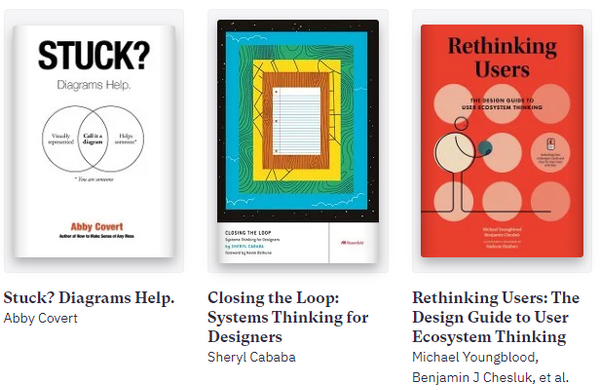Transdisciplinary UX
A Self-Study Curriculum
The self-study curriculum provides the foundation for Transdisciplinary UX Design which utilizes multiple disciplines to explore a problem space and collaboratively develop new shared conceptual solutions.
The self-study curriculum aims to unite UX Design, Sensemaking, and Futures Thinking through the shared connection of Cognitive Psychology. The curriculum provides an alternative learning pathway that bridges the gap from theoretical knowledge to practical design activities, reinforces foundational concepts, encourages continuous learning, and builds a helpful reference library.
Transdisciplinary UX Foundations
Semester 01: Introduction to UX Design principles, methodologies, and frameworks.
UX Designers collaborate with various groups to understand different perspectives: user, business, expert, and technical, to explore a problem and then work to align efforts to resolve root cause issues.
Understanding the foundations of UX Design principles, methodologies, and frameworks provides the tools to develop a UX Mindset. A UX mindset is the ability to advocate for users, understand how people interact with systems and tools, and understand the problems encountered while using products, websites, services, and applications.
Sense the Futures
Semester 02: Introduction to Sensemaking and Futures Thinking
UX Designers need to organize and communicate their efforts to explore past influences, map present conditions, and plan for future scenarios. Understanding sensemaking and future thinking provides structures for studying a problem space and developing curiosity habits. Good design is derived from continuously exploring issues, asking questions, and understanding the interconnections of systems distilled into sharable insights.
User Experience Design
Semester 03: Intersection of UX Design and Cognition
UX Designers advocate for various groups, presenting user needs as the core of problem-solving and forming novel solutions. Designers need a working knowledge of information processing, cognitive biases, rationality, and human behavior to understand users. Understanding the basics of cognition is essential for implementing user research, visual design, and intuitive features.
A key insight into human complexity is realizing that “We are emotional, feeling beings; who, on rare occasions, think” - Brené Brown.
Understanding Users
Semester 04: User Interviews and Observations
UX Designers conduct interviews, workshops, and meetings to engage with users, stakeholders, experts, etc., to collect information and distill it into actionable insights. Service Design and Facilitation are tools to strengthen communication skills and provide structured activities for collecting information, while task analysis supplies a framework for optimizing user workflows.
A key insight into data collection is working backward, knowing what you will do with that specific data after it is collected and how it will move a project forward.
Sense the System
Semester 05: Exploring problem spaces and systems
UX Designers use research and iterative design processes to frame, manage, and solve complex problems by understanding the underlying relationships between system components. Understanding how system components depend on and influence each other provides insights into design’s impact on scalable solutions and developing multiple future scenario initiatives for adapting to change.
Design Practices
Semester 06: Design as a non-linear odyssey embracing ambiguity
UX Designers explore ambiguous problems by conducting activities that produce predictable deliverables, creating clarity for the subsequent actions. Transdisciplinary UX utilizes an odyssey approach to the design process, emphasizing that there is no rigid structure, only tools to guide a path forward.
Good UX Design processes follow pathways derived from research data, user needs, and iterative usability testing to reach project goals.






